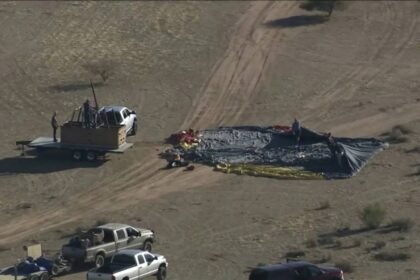Ancient “zombie viruses” frozen in melting Arctic permafrost could fuel a new pandemic if unleashed by weather trade, scientists have warned.
Global warming is enabling increased human activity within the Earth’s northernmost reaches, as melting sea ice opens up shipping and commercial opportunities, which include mining deep into the permafrost, which covers a fifth of the northern hemisphere, in particular in Canada, Siberia, and Alaska.
Fearing the possibility of awakening a disorder from humanity’s long-forgotten past, scientists have reportedly commenced to plan an Arctic monitoring community in the hopes of preserving a watchful eye for any early instances of a disorder sparked with the aid of those historical viruses, additionally known as Methusela microbes.
Ancient viruses have already been determined in Siberian permafrost, which includes one sample that is 48,500 years old. A group led by geneticist Jean-Michel Claverie has revived several such viruses, capable of infecting only single-mobile organisms.
But the scientists fear viruses capable of infecting people will likely also lurk in the permafrost. “We see the strains of many, many, many different viruses,” Professor Claverie informed CNN in March, including: “If the amoeba viruses are nonetheless alive, there’s no reason why the alternative viruses will now not be still alive and capable of infecting their own hosts.”
As a result, Prof. Claverie is among the scientists working with the University of the Arctic network on plans to establish quarantine centers and offer medical expertise that could pinpoint and try to deal with any early cases without them leaving the vicinity, consistent with The Observer.
“At the moment, analyses of pandemic threats and recognition of illnesses that might emerge in southern regions and then spread north” stated Prof. Claverie of Aix-Marseille University, who instructed the paper. “By assessment, little attention has been given to a virus that might emerge in the far north and then journey south—and that is an oversight, I believe.
“There are viruses up there that have the potential to contaminate people and begin a brand new sickness outbreak.” Among the genomic lines of human pathogens recognized already by the team in Siberian permafrost are poxviruses and herpesviruses, he stated.
Virologist Marion Koopmans agreed, telling the paper: “We don’t know what viruses are lying available in the permafrost, but I assume there is a real chance that there is probably one capable of triggering a sickness outbreak—say, an ancient form of polio. We should expect that something like this will occur.”
With forecasts suggesting the Arctic Sea might be ice-free as early as 2040 due to climate breakdown, it is the possibility of improved human interest inside the Arctic rather than melting thermafrost that most concerns Prof. Claverie.
“Huge mining operations are being deliberate and are going to drive great holes into the deep permafrost to extract oil and ores,” he stated. “Those operations will launch extensive amounts of pathogens that still thrive there. Miners will stroll in and breathe in the viruses. The consequences will be calamitous.”
“Our immune structures might also have in no way been in contact with some of those microbes, and this is another fear,” stated Prof. Claverie. “The situation of an unknown virus as soon as infecting a Neanderthal comes lower back at us, even though unlikely, has ended up being an actual opportunity.”
Prof. Koopmans delivered: “If you look at the history of epidemic outbreaks, one of the key drivers has been changes in land use. The Nipah virus was spread by fruit bats who have been pushed from their habitats by human beings. Similarly, monkeypox has been linked to the spread of urbanization in Africa.
“And that’s what we are about to witness within the Arctic: a whole trade in land use, and that would be dangerous, as we’ve got it visible elsewhere.”






